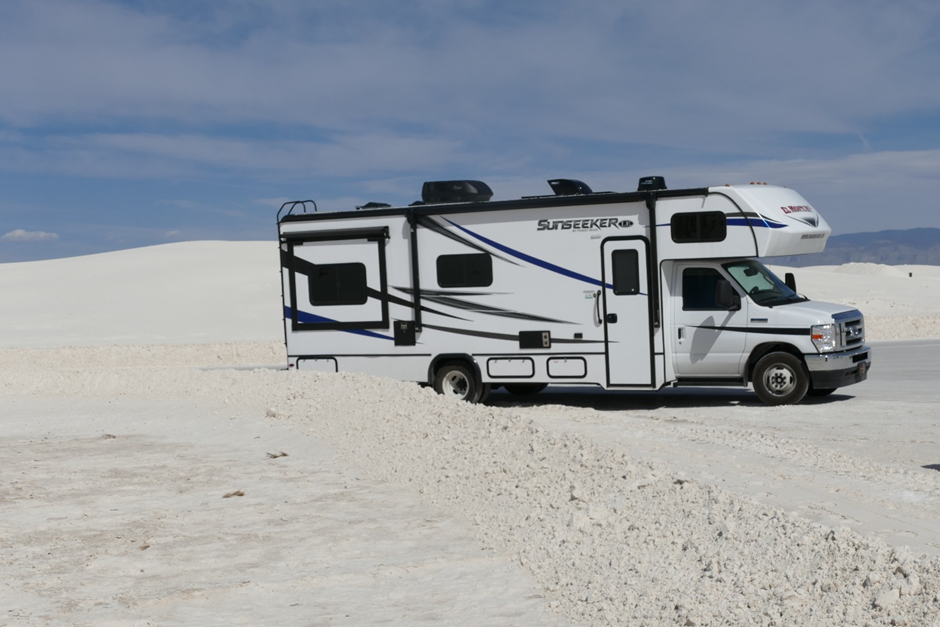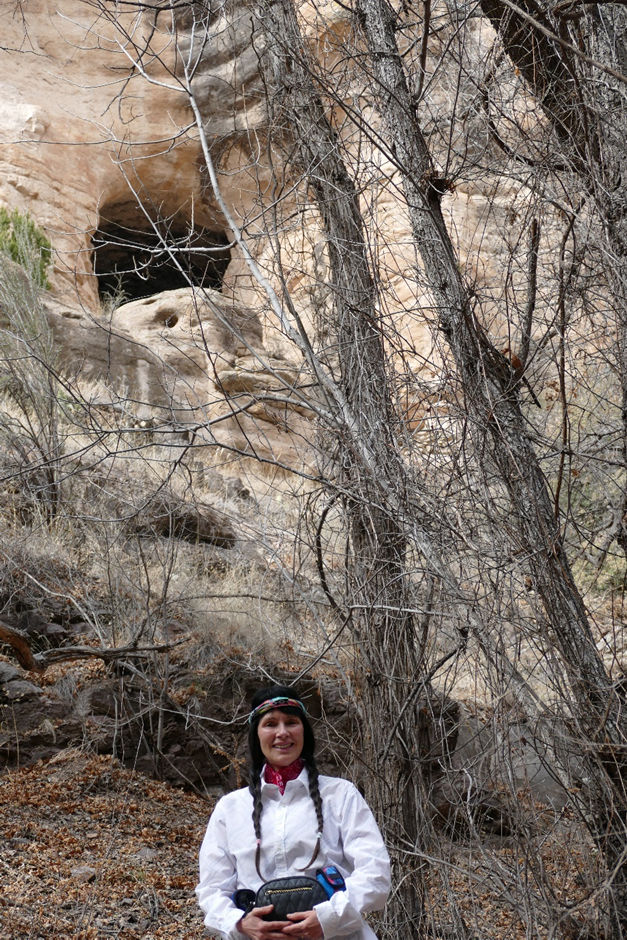Overnight stops (in date order): Alamogordo; Mimbres; Albuquerque (x3); Mexican Hat; Grand Canyon (x2); Wickenburg

We drove by El Paso and crossed the State border. Our first stop in New Mexico was at White Sands National Park – the world’s largest gypsum dune field.

The wind has rippled the surface of the white sand,


and blown it into dunes

that cover 275 square miles of the desert floor.
On a day when the temperature was close to 90°F, it was no comfort to have a view of the snow-topped Sierra Blanca Peak, 70 miles to the north.

In about 1300, Pueblo Indians of the Mogollon culture settled briefly in caves above the Gila River in what is now the Gila National Forest in south-west New Mexico.

Because they lived in stone houses, in agrarian settlements of up to 5,000 people, the Spanish invaders called the native people of the area ‘Pueblo’ (Spanish for ‘town’) Indians – a term that the native people themselves continue to use).




On the walk to the dwellings, we spotted a New Mexico Crevice Spiny Lizard

(a close-up of its tail explains the name)

and a Steller’s Jay.

The drive through the Gila National Forest to and from the cliff dwellings was a bonus.


There was a particularly impressive view from the Emory Pass, at an altitude of nearly 9,000 feet; despite the very large fire ten years ago that killed many of the ponderosa pines.

Back on the flatlands on the road to Alburquerque, we stopped for lunch at the town of Truth or Conequences; named after a popular radio programme of the 1950s.



The old district of Albuquerque has the feel of a European town.


Its Museum focuses of the art of the South-west USA;



and invites visitors to participate – Danielle was more than willing.

She titled her first creation, ‘The Colourful Life’

and her second, ‘Connections’.

Leaving Albuquerque, we continued west; following a section of the old Route 66,


before turning right at Gallup and heading north;

through country that became increasingly rugged.


We diverted into the south-eastern corner of Utah to Mexican Hat; where we ‘boondocked’ (camped for free).




The next day, we wove back and forth between Utah and Arizona on our way to the extraordinary buttes, mesas, arches and rock windows of Monument Valley – the setting for numerous Hollywood Westerns.






Our Navajo guide


took us into the restricted areas of the Tribal Park;


where the petroglyphs were reminders that the Pueblo Indians occupied the region before the Navajo.


Moving from one marvel to another, we spent two nights at the Grand Canyon; taking in the extraordinary scenery from the many viewpoints off the 32 miles of road that runs along the south rim.













The size and depth of the Canyon was well illustrated by the sight of a California condor soaring high above the canyon floor – but far below our viewpoint.


The California condor is one of the rarest birds in the world. Thirty-five years ago it was extinct in the wild. It was reintroduced into the Grand Canyon region following a captive breeding programme.
We saw other wildlife on the rare occasion that we turned our backs on the Canyon.


As we headed towards the coast, we drove through Jerome

and over a pass in the Mingus Mountains.

Our last few miles in Arizona were a mix of typical Sonoran desert

and farmland – where the land had been irrigated by water diverted from tributaries of the Colorado River.


You’re following a similar route to mine and Steve’s in 1989 so it’s bringing back many happy memories, although your photo’s and reports are better than anything I did! Very pleased for you both and looking forward to more. Stay safe, Paul and Maralyn.
Hello Paul and Danielle, this trip has been a real contrast in scenery. The desert and rock formation photos are dramatic in their own right and your map shows the large area you have covered this holiday. Thank you for our card, can’t believe how quickly the time has gone. Enjoy the rest of your holiday love Joanna & Paul xx
Navajo Indians played a special role in WW2 with American forces in The Far East. Many worked in communications-it didn’t matter if these were intercepted because no one in the Japanese army could understand the Navajo language.
Looking at some of your photos of desert areas it is amazing how wind erosion has sculpted so many spectacular rock formations. A photographers dream. There must be a travel guide in the making!
Good luck